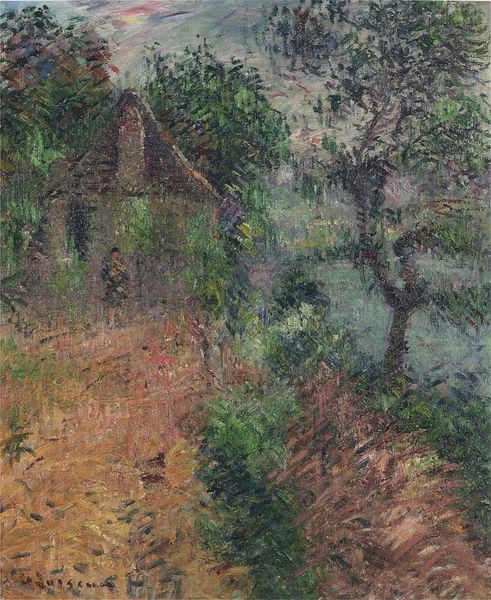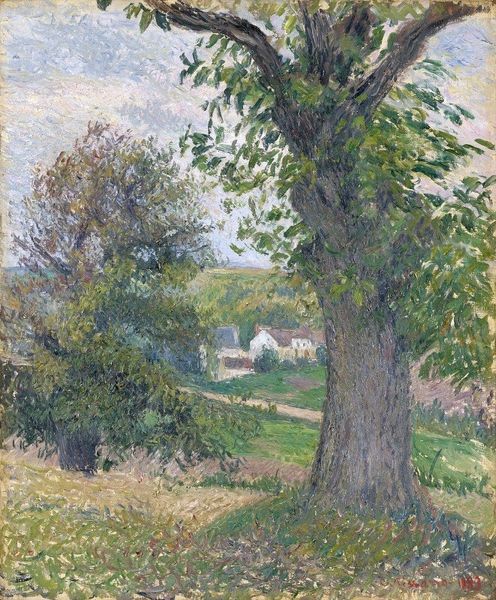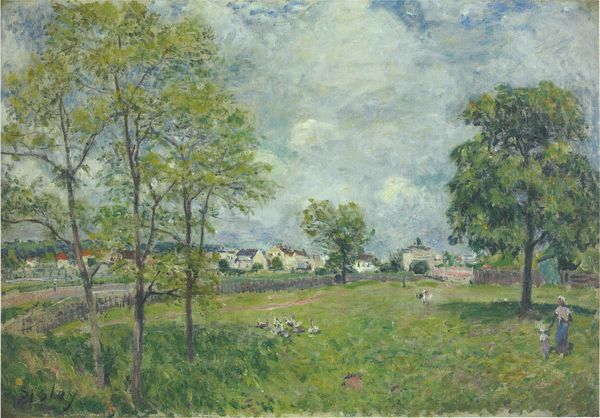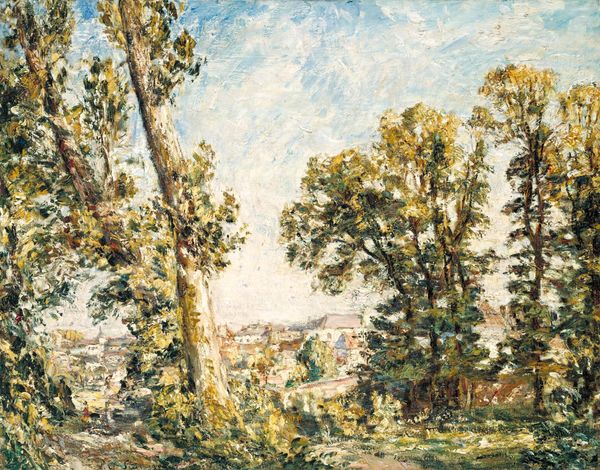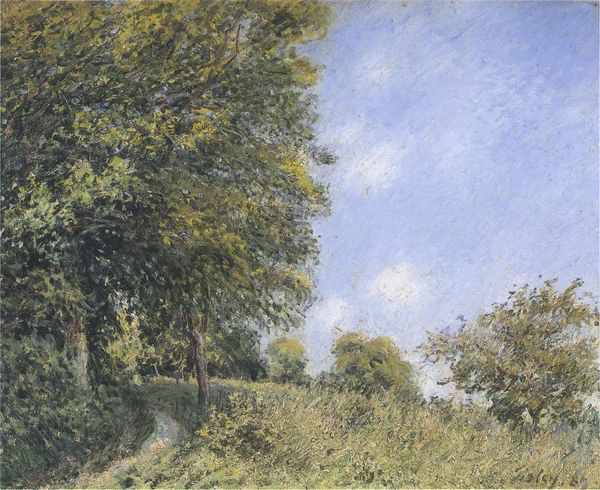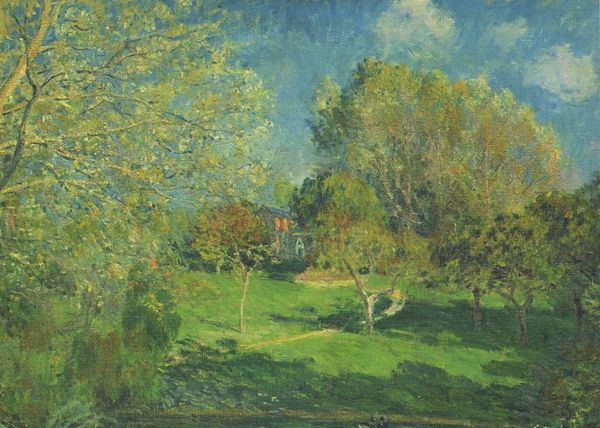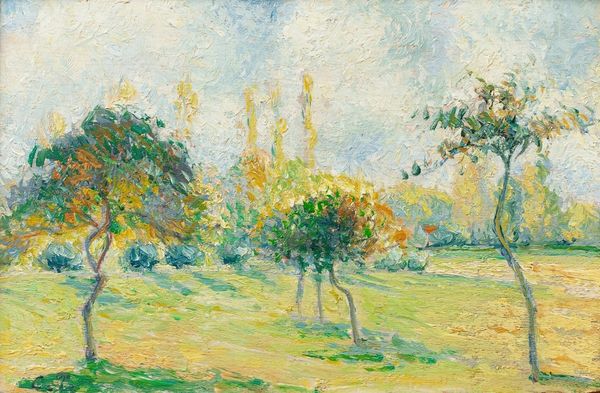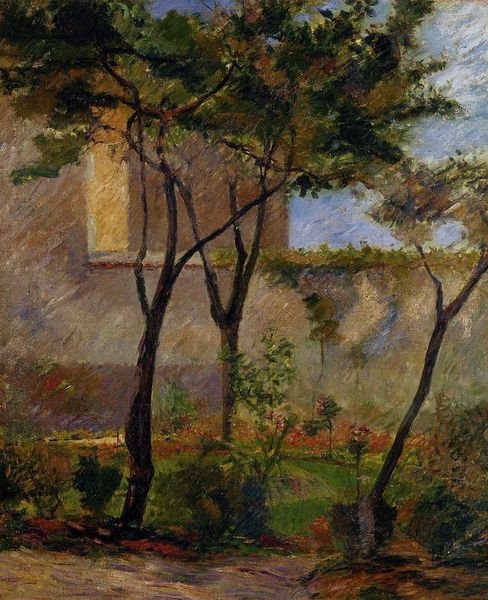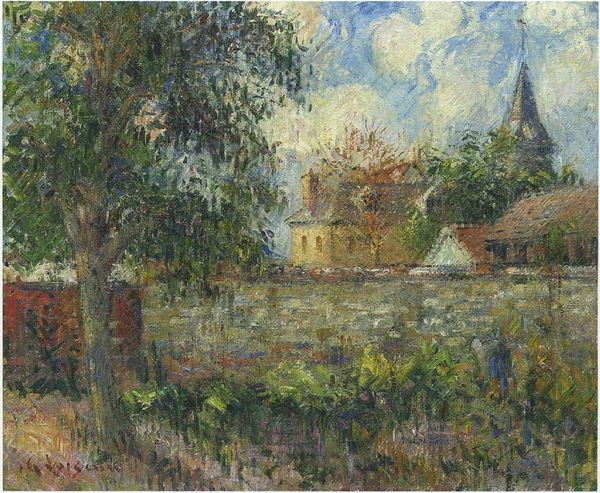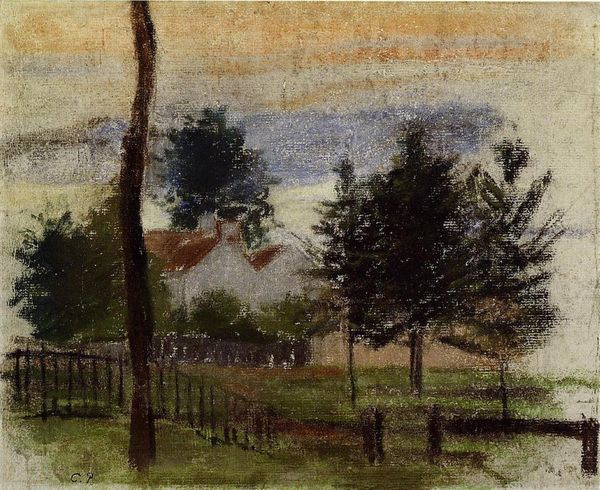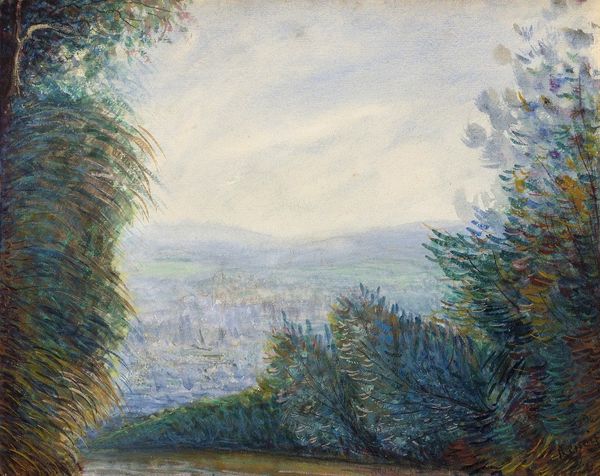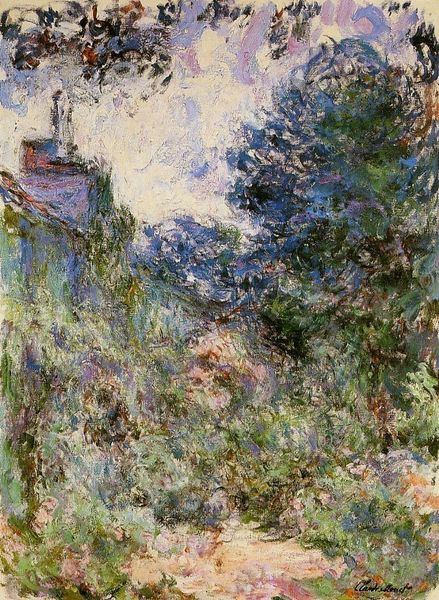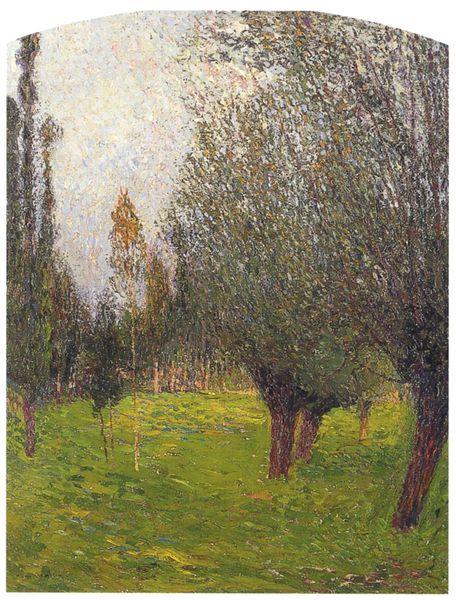
Copyright: Public domain
Curator: "The Bazincourt Steeple (study)" by Camille Pissarro, painted in 1895. It's currently held in a private collection. What are your initial thoughts? Editor: My first impression? Textured! It’s incredibly dense with layers of what looks like oil paint. The overall feeling is rather hushed, almost secretive, like a hidden view. Curator: Precisely! Observe how Pissarro manipulates perspective, obscuring and revealing at once. The steeple is framed by these dense trees, creating depth through careful color placement. The entire picture plane vibrates with tonal relationships, very typical of Impressionism. Editor: It makes me consider the artist's physical relationship to the subject. En plein air work necessitates grappling with the immediacy of nature—its unpredictability and the physical labor to get paints and canvases outside, right? What brushstrokes he must have needed! I can almost imagine him battling wind and sun as he worked on site to capture this. Curator: I agree that this immediacy, this ephemerality, is vital to its understanding, but also note the considered composition and placement. Notice how the color modulates. Pissarro builds a harmonious structure with these soft strokes, don't you agree? Editor: Structurally, the layers upon layers serve an interesting purpose: the thickness embodies the slow layering process inherent to oil painting, but it is at the expense of obscuring our steeple; this raises questions about craft—did he or someone else prime these canvases; was this color application meant to create visual noise? Curator: Indeed. This visual "noise," as you put it, allows for nuanced interplay between light and form. The steeple isn't simply a literal representation, it is filtered through Pissarro’s individual and subjective perception. Think about the meaning making there. Editor: But, to focus solely on the artistic experience overlooks how paint materials, and maybe even canvas manufacture and availability influenced impressionist artworks, like this. So many of our present assumptions around fine art rely on the availability and industrialization of ready-made materials. Curator: Of course, these are just assumptions, biases. By engaging in semiotic reading of art in an artful way, we gain insight. We must acknowledge what materials create which signifiers, because it also helps highlight artist vision. Editor: Pissarro successfully translates the quiet feeling into physical materials that were around in his era to create a study about the importance of materials for creating depth and composition. Curator: Ultimately, whether it's focusing on the raw materiality, it gives us a deeper relationship to Pissarro's work. Editor: Absolutely! Thinking about Pissarro in 1895—the painting's textured immediacy brings forth more than his perception. It also raises so many interesting questions about how labor relates to creating, doesn't it?
Comments
No comments
Be the first to comment and join the conversation on the ultimate creative platform.
